Muscle Soreness - What It Means For An Athlete
What’s up Gronk Fitness!
Today, we’re answering a few very important questions on the topic of muscle soreness.
“Should I work out when I’m sore?”
“Does soreness mean I’m finally growing muscle?”
“How can I speed up the recovery process?”
“Will muscle soreness hinder my sports performance?”
And as always, the answer to such questions is “It depends!”
What Is DOMS? (Delayed Onset Muscle Soreness)
Let’s say you hit the gym ultra-hard or just came back to exercising after being out of the gym for a while and about a day to three days after your workout you start feeling sore. This feeling of pain is what we call DOMS and it is caused by all the micro-tears and inflammation that happens to your muscle tissue as a result of your workout.
The process of repairing your muscles is what causes them to grow in size and get stronger, so this is all normal and a part of the process.
But should you go back to the gym if your muscles are still sore?
The answer is: It depends on how bad it is.
Are You In Uncomfortable Pain?
If you’re in a lot of pain and it feels like something is wrong, obviously you should not go to the gym and you should go see a doctor. Most of us know our bodies well enough to know when something is not right. If that’s not you yet, just take it easy and consult your physician.
Are Your Muscles Sore To The Touch?
If you didn’t injure yourself but the muscle is very sore to the point that it hurts when you touch it or causes you to not have full range of motion, then just…
…wait another day to work that muscle group.
The key point here is do not train the muscle group THAT IS SORE. We’re not saying skip the gym, we’re saying let this specific muscle recover and focus on another area for that day.
“If my legs are killing me I still train that day but I will adjust my schedule to work something like upper body.” – Rob Gronkowski
There is no need to rush the process because if you’re experiencing DOMS and can't perform full range of motion on your exercises, you’re not going to have the most productive workout anyway.
Another thing to keep in mind is that if your muscles are working on repairing the tears you’ve inflicted on your previous workout, creating more tears and damage will only disrupt the recovery process.
So the bottom line, rest THAT area a little longer.
Do You Have Light Muscle Soreness?
If you’re feeling reasonably sore, but it’s not as drastic as the situation described above, it’s actually a good thing to go to gym and get the sore muscles moving again. Just be sure to take it easy on the weights!
This is not the time to go hardcore and try to hit a new personal record. What you want to do is hit some aerobic exercises and do some light lifting.
Activity in this case is good because it will increase the temperature in the area which increases oxygen flow and the flow of much needed nutrients to help heal the damaged area as well.
This blood flow is also good because it will help to take toxins away which were produced by the tears and subsequent inflammation of your muscle tissue.
If I’m Not Sore After My Workout, Does That Mean I’m Not Growing Muscle Or Strength?
The answer is No! And that’s because there are three mechanisms by which muscles grow and muscle soreness is simply one of them:
- Mechanical Tension
- Metabolic Stress
- Muscle Damage (leads to soreness)
Therefore, if you worked out and you are not sore, that means you didn’t do a lot of muscle damage but you can still be growing muscle because your workout focused on one or two of the other growth mechanisms: mechanical tension and/or metabolic stress.
How To Maximize Your Performance While Minimizing Soreness
Now let’s talk about how you should structure your workouts. If you really want to maximize muscle growth, your workouts should incorporate all of the three mechanisms!
- Perform compound movements like squats and deadlifts to increase your overall strength. Use heavy weights and set PRs! This is using mechanical tension to stimulate growth.
- Vary your exercises and change your workouts to prevent your body from getting used to them so you can cause muscle damage consistently.
- Mix exercises that cause tension on both stretched and contracted positions. Remember the Romanian deadlift versus the leg curl example. The stretched one will give you muscle damage, the contracted one will give you the pump and metabolic stress.
- Aim for full body workout instead of training body parts on different days. This will increase your training frequency and prevent muscle soreness, helping you perform in your sport or hobby.
- Lastly, incorporate volume into your workouts. Choose a few exercises that isolate the muscle and do lots of reps and sets with short rest periods to maximize metabolic stress! Finishers are a great way to do that!
Get Yourself A Foam Roller & Start Rolling!
Regardless of how sore you may be, foam rolling is by far the superior method to decrease soreness, find relief and speed up muscle and fascia recovery. Now, depending on how sore you are or how tight your muscles are, different kinds of foam rollers are recommended. Perhaps, start with the standard EVA Foam Roller and then move on to harder rollers such as the High Density Foam Roller or even the Double Ball Massage Roller.
And as always…get your mind right!




Leave a comment